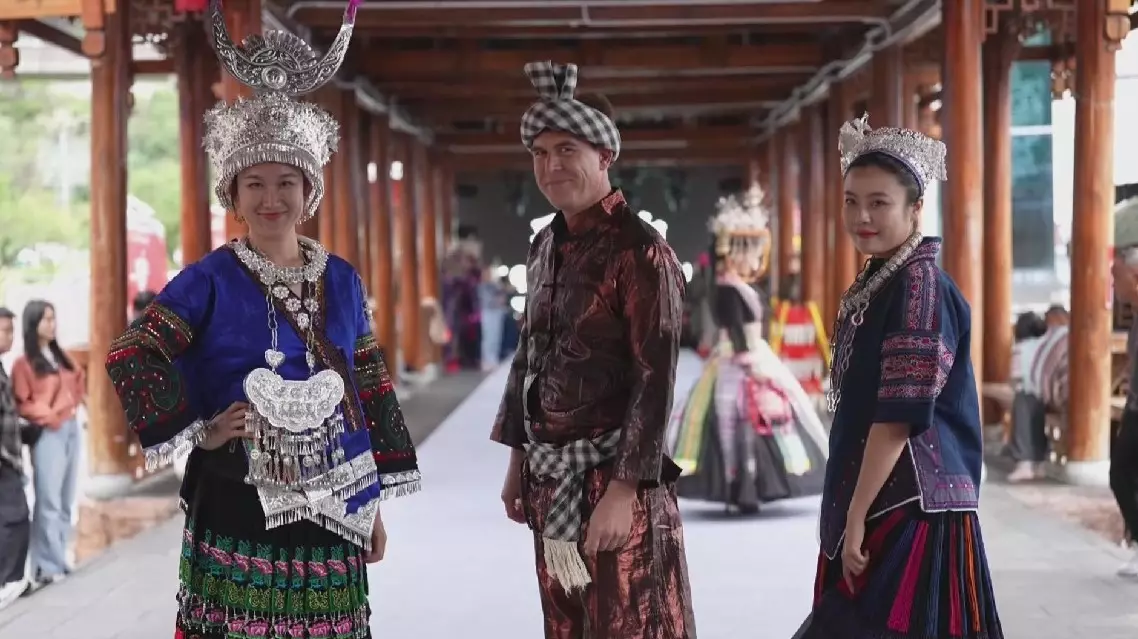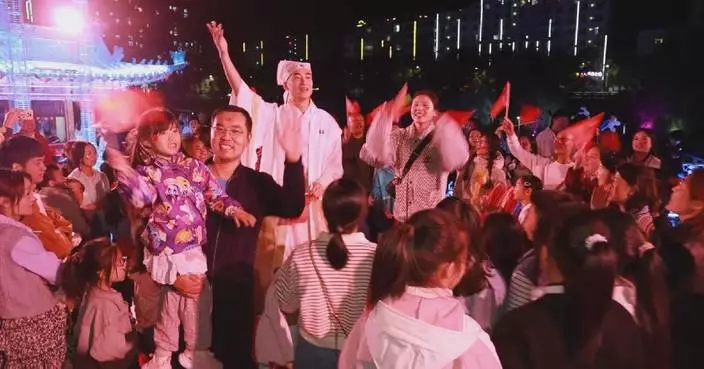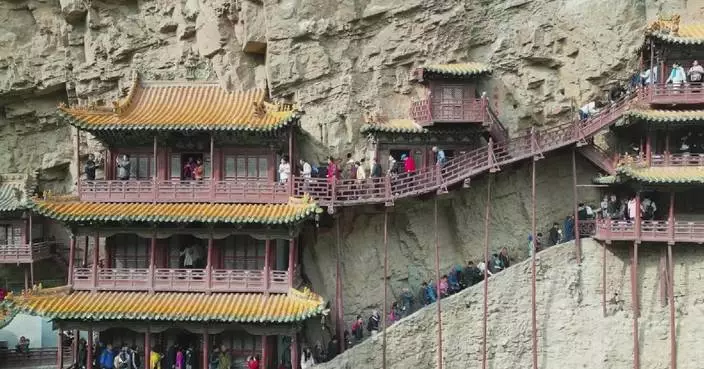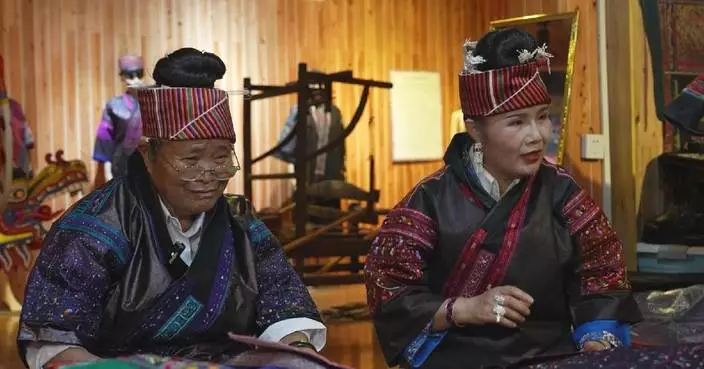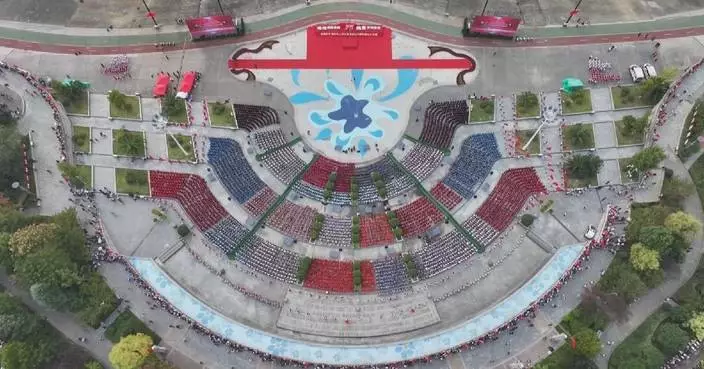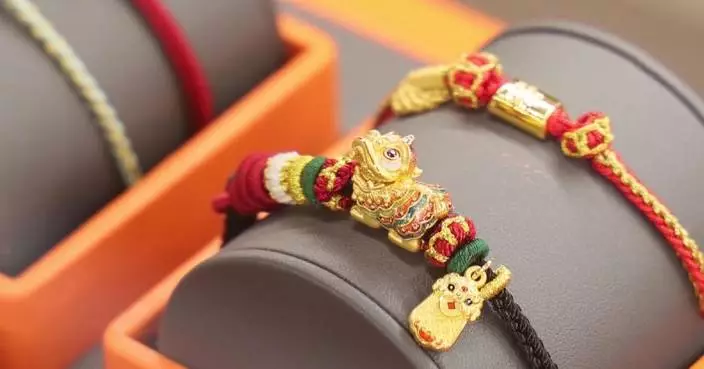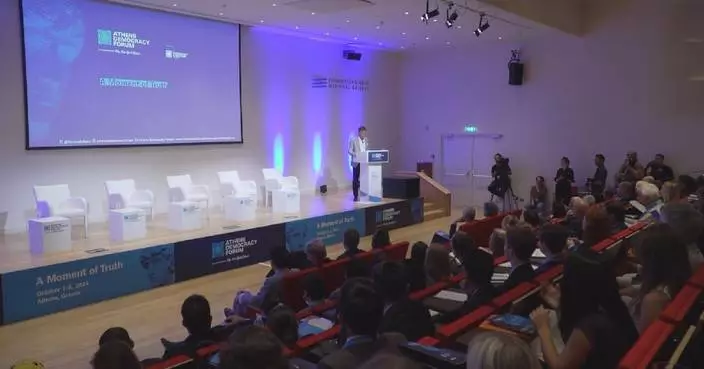Towns with charming ancient streets and intangible cultural heritage have mesmerized holidaymakers across China during the week-long National Day holiday.
The National Day holiday period, which runs from Oct. 1 to Oct. 7, is a peak travel and tourism season in China.
As ancient towns become popular destinations for visitors, local governments across the country have staged intangible-cultural-heritage-themed events to enthrall tourists with immersive cultural experiences.
In southwest China's Sichuan Province, streets of Luocheng Ancient Town, which still retains the cultural charm of the Ming (1368-1644) and Qing (1644-1912) dynasties have been adorned with national flags, exuding a strong festive atmosphere.
The splendid performance of the intangible cultural heritage, such as the kirin lantern dance, a traditional Chinese cultural practice involving elaborate lantern displays and dance performances, martial arts, and Sichuan opera, have attracted numerous tourists.
"I have a quite good impression of this place. It has the rustic charm," said a tourist.
In east China's Jiangxi Province, the tea-picking opera fascinated tourists. The interaction with players and the role-playing not only allowed visitors to have a deeper understanding of the story, but also gave them a chance to experience the beauty of traditional opera.
"The performance has a lot of interaction with visitors, so that we have much participation in it. Hope that we can see more and more folk cultural programs with our own cultural features in the future," said Lin Wei, a visitor.
The Shuidong ancient street, a thousand-year-old ancient town in Xuanzhou District of east China's Anhui City, has been bustling with tourists seeking leisure time during the National Day holiday.
Activities such as honey-date making, shadow puppetry, land-boat dance, sparked laughters and cheerful moments.
The Zhuxi ancient town in Yancheng, a city in east China's Jiangsu Province, provided visitors a tapestry of cultural and tourism activities.
The themed parade brought visitors back to ancient time. The performance of chime bells and bamboo flutes were pleasing to the ear. The magic drama that cleverly integrates classical literature with modern magic gave visitors a fresh experience.
"The activities held in the Zhuxi ancient town are new for kids. They have preserved the charm of traditional culture while incorporating modern elements," said Bai Hailu, a visitor.
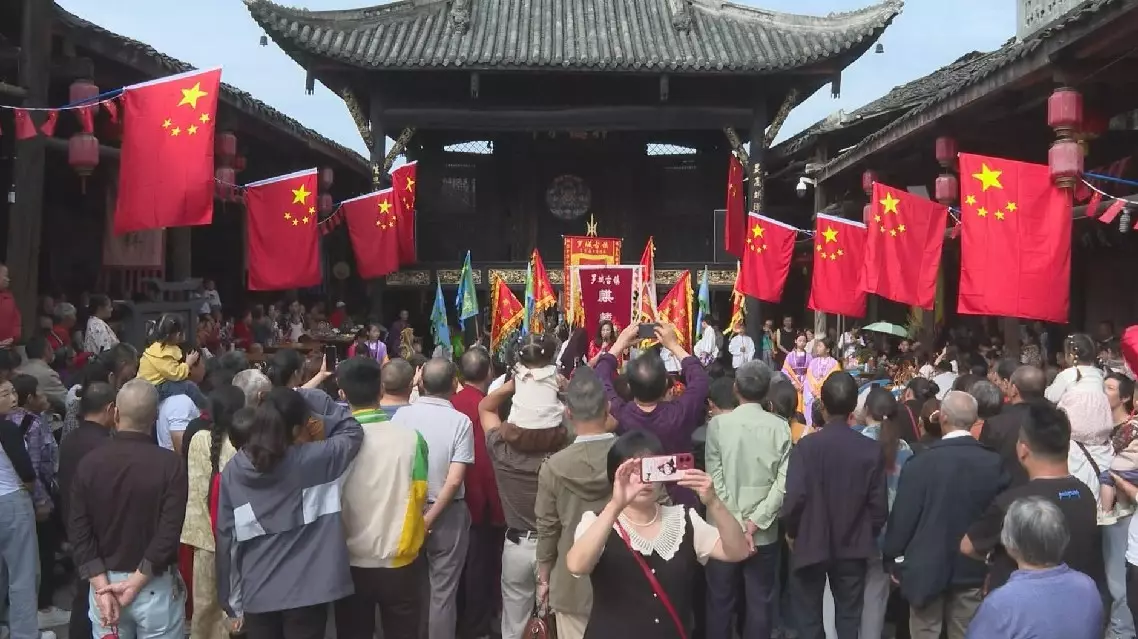
Ancient towns across China allure holidaymakers during National Day holiday
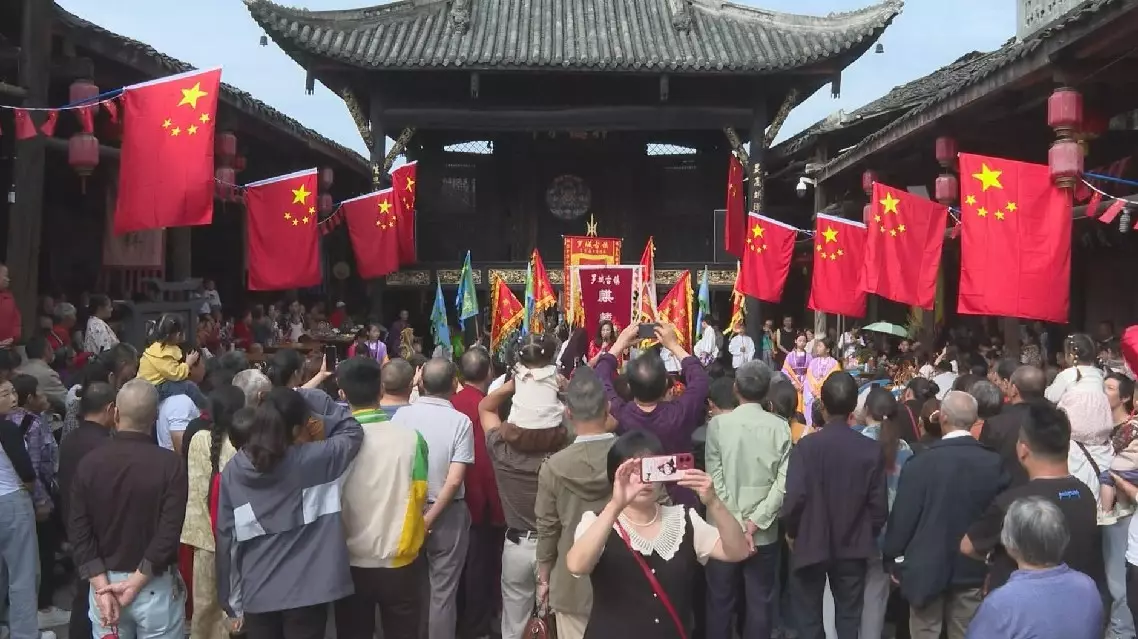
Ancient towns across China allure holidaymakers during National Day holiday


